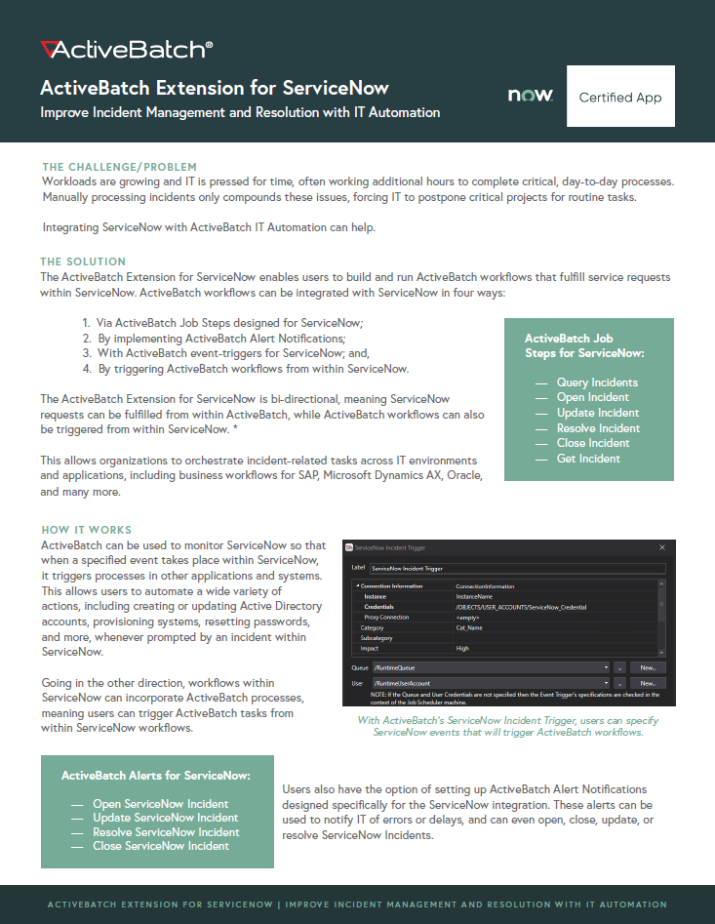Workload Automation and ServiceNow: It’s A Two-Way Street
A bidirectional integration for ServiceNow allows users to externally fulfill ServiceNow requests and to trigger external processes from within ServiceNow.

Today’s IT environments rely on a wide range of disparate technologies, thanks to a surge of new digital tools that are being used across the organization.
With so many moving pieces, the modern IT environment is becoming more complex and distributed. As a result, IT professionals are looking for ways to simplify their environments.
Why Use Bidirectional Integrations?
A common problem with complex, distributed environments is that disparate technologies cannot easily pass information or data between each other. Common workarounds such as custom scripts can be time-consuming and error-prone (and cause more complexity in the long term).
This causes significant issues for automated workflows that must incorporate data from multiple digital tools —when these tools cannot communicate, complexity develops, and automation efforts are stymied.
In order to reduce complexity, workload automation (WLA) solutions typically offer prebuilt integrations with popular platforms and third-party tools. These integrations allow Tool A to send and retrieve information from Tool B.
Bidirectional integrations, on the other hand, offer a two-way street that allows Tool B to access and manipulate information in Tool A, just as Tool A can access and manipulate information in Tool B.
Workload Automation for ServiceNow
WLA solutions can enable users to automate the fulfillment of ServiceNow requests from within the WLA solution and to trigger WLA workflows from within ServiceNow.
It’s a two-way street, without custom scripts, API development, or additional middleware.
This allows IT to orchestrate incident-related tasks across IT environments and applications, including business workflows for SAP, Microsoft Dynamics AX, Oracle, and many more.
With a bidirectional integration connecting ServiceNow with a WLA solution, users can more easily and reliably automate a wide variety of actions, including:
- Creating or updating Active Directory accounts
- Provisioning systems
- Resetting passwords
- And more…
By creating automated, end-to-end workflows that seamlessly integrate with ServiceNow, IT can dedicate more time to higher-value pursuits, better serve customers and end-users, and —with fewer manual processes, faster results, and fewer errors— significantly improve service levels.








